Interested? Ring 0141 569 0342 or get in touch
PR/Business blog
#SelfPub – Part 1: How I 1st-Drafted an 87,000-Word Self-Help Book over 46 Days in 2018*
*This is the first in a series of posts about how one first-time self-publishing author is taking his book from idea to Amazon.
Have you always aspired to write a book?
Are you looking for advice on how to get going, without an agent, without a publisher...with a certainty that your work will be on sale soon?
In this 8,000-word article, you’ll discover how I – a 45-year-old Brit with no writerly mates – turned my pipedream into a not-so-shitty first draft of 87,000 words.
I sincerely hope my story inspires you to do the same.
#1 The Seed is Planted
You never know you’ve had a Sliding Doors moment until later.
In 2014, I spent the entire year obsessed with SEO and digital marketing. This led me to sign up to hundreds of email lists, one of which was AppSumo.
Two years on, SumoMe decided to invest in long-read guest posts, and I mean long read, like 30 minutes long, and another 30 minutes for the comments.
One of these had a profound effect on me, and saw a seed I’d planted back in 2015 start sprouting.
I’d been business blogging since early 2014, and diligently sending out helpful stuff to my email list subscribers since early 2015.
(I never sell anything through my list: I feel humbled enough that people want to hear from my every week, I couldn’t imagine hitting them up for money or the like.)
My blogging had become more ambitious and I’d written a few unconventional influencer posts that had gone down well.
But I was spending a lot of time on them and the karmic benefits I’d hoped would come my way were proving to be elusive. I didn’t mind, I was learning. Still, surely there had to be some sort of payback?
I considered writing a business book but didn’t know where to begin, and the thought of toiling away for years, receiving knock back after knock back meant this was not a viable option.
This blog post showed me another way. One where you could do something useful and helpful but actually get some commercial benefits too.
I’d love to say the genesis of my 87,000-word book first draft came while wandering through the Lake District, lonely as a cloud, but I’d be lying. This SumoMe blog post told me that the seed I’d planted myself in 2015 – writing a book – was practicable.
I knew about self-publishing – the subject of that SumoMe guest post – but didn’t know anyone who’d done it, and knew not how it worked.
So my Sliding Doors moment was signing up to AppSumo and reading Jesse Tevelow’s post. That’s where it all started for me.
#2 Doing the Research
It was February 2016. The seed had germinated. Now it needed watering.
I knew I had to research the life out of self-publishing to see whether it was possible for me, David Sawyer, a PR man from Glasgow with a young family and a full-time career. I had questions:
A: How does self-publishing work?
B: How will I get money from it?
C: Are there different types of self-publishing?
D: What is KDP Select?
E: Why do people look down their noses at it?
F: What could I learn? What would the scope for personal development be?
G: Do you have to order loads of books and hope people buy them?
H: What about the print quality?
I: What would happen if I went down the traditional publishing route?
J: Was there a hybrid approach?
K: How long would it take?
L: How would I fit it in around client work (I own and run a Glasgow PR consultancy)?
M: Why is it that all the best advice seems to come from the US? How does it work in the UK?
All these and more were answered in painstaking detail through the power of Google. First, back then, and later in the process.
The key question? Could I do this? I needed to be sure.
Here’s where my research led me. And if you follow the breadcrumb trail in the links below, you’ll find thousands more resources.
These five posts – including comments – plus Jesse Tevelow’s, I’ve carried around in a Foolscap folder for as long as I can remember. I dip into them whenever I need reassurance on some point or other.
Why and How I’m Writing a Book in 2015
Self-Publish The Bestseller Inside Of You: A How-To (as you’d expect from James Altucher, a searingly honest and informative guide to publishing books)
How to self-publish your book on Amazon (the ultimate guide)
Here (with 2 Years of Exhausting Photographic Detail) Is How To Write A Book (Holiday’s a traditionally-published author but his advice on the book-writing process is valuable, comprehensive and universal)
They tell you how to self-publish a book and why everyone should be doing it. Read them and not one lightbulb but a fairground-roof-full will light up your sceptical life.
N.B. As this article went to press a new post popped into my inbox. This too is well worth a read (mine’s not an industry how-to book but the principles hold): The Ultimate Thought Leadership: How To Write an Industry ‘How-to’ Book
#3 Getting the Self-Publishing Mindset
I have an advantage here, I confess. I run my own business; just me. And I’ve grown to like the control and freedom that brings.
It also means I’m loathe to rely on the whims and peccadilloes of others if I want to achieve something. So self-publishing has obvious benefits.
However, the more I looked into it not only did I realise it could be done but also it became the thing I wanted to do, and the route I’d suggest to everyone I know who feels they have a book in them.
Even if a publisher had somehow picked up on the fact (by osmosis maybe) that I had something unique to share with the world and had offered me a huge advance (unheard of for first-time authors unless they have a huge following), I would have turned them down.
You see, I like hard work, I like knowing everything about a process. The more I got into the weeds of my self-publishing research the more I knew this was for me.
Here’s why:
A: I get to write exactly the book I want. If I’m going to pour myself into a once-in-a-lifetime creative act, there ain’t going to be any compromises along the way.
B: I set the price.
C: No-one’s going to market this book like I will. And I can offer these services to the increasing number of people who will go down this route to build their influence in years to come.
D: I get the book out as fast as I can, within the limits of my own cruel perfectionism.
E: As per one of the themes of my book, I don’t give a gnat’s chuff what people think about me, so if they want to think I’m self-publishing because I can’t get a publisher, well, blow me.
F: Times have changed. It’s lovely and romantic to beaver away for a year, send off your treatment, then get loads of rejection letters until someone discovers your manuscript at the bottom of a dusty pile and hey presto, you’re a literary star. And yes, I’m sure James Joyce didn’t have to format for epub. BUT this is 2018 not 1918.
G: Self-published books have higher star ratings and sell more.
All these things are important for the reader, because it means they get my best, unfiltered work.
I haven’t carried all this around in my head for the past two years, I’ve forgotten more than I remember, and it was only after finishing the first draft last month that I finally nailed the economics of it all.
But that’s not the point. Before you start writing a book, before you commit, you just need to know self-publishing is possible.
You can then get on to the interesting bit without stressing about the technical side of things, safe in the knowledge that all this effort is not going to be in vain.
#4 What the Hell am I Going to Write About?
It’s June 2016. After googling the life out of the topic and reading hundreds of blogs – and looking up an old school-friend who’d self-published her first book – I finally decided that yes, actually, this whole thing was going to work.
I put together a two-page book proposal – like authors going down the traditional route do – and sent it to 12 friends and family who’d said they’d give it the once over and feed back.
Looking back now, my initial concept was unambitious: a business card book that would have grown my media list but not set the heather on fire.
Three out of the 12 people picked up on this fact and gently said so. I promptly ignored them and listened to the other nine. The stage was set. I was ready to write. Nothing was going to stop me now.
(The book I was going to produce was safe, and would have sold a few hundred copies. It would have boosted my profile, built my authority and scored me consultancy gigs. But who wants safe? Safe isn’t what dreams are made of.)
#5 Life and Work Sometimes Get in the Way
Then a few things happened:
i) I got the chance to work with a few great clients.
ii) I veered off at various tangents in my personal life.
iii) I lost enthusiasm for the initial concept: been there, done that I thought.
I still held onto the dream. It was buzzing round my head all year. I read two books during this period, which I can recommend to budding self-published authors.
They kept my dream alive (albeit Published made things seem too easy, but that’s what I needed at the time):
Published: the Proven Path from Blank Page to Published Author
The latter is very good, written by Brits with a lifetime of experience.
I also kept myself busy purchasing tools (from AppSumo) – including Scrivener and KingSumo – and discovering new bloggers such as Joanna at The Creative Penn, the doyen of UK self-publishing.
#6 A Stem Forms
Let’s recap. A seed was planted in 2015. It germinated in February 2016 and over the next six months it began to sprout.
September 2016 saw progress halted and by July 2017 it was in danger of dying a withering death. Until a stem started forming, slowly at first, then shooting up as the weeks went by.
Five years of pursuing various passions, reading, following my instinct, began to crystallise. All the stuff I’d learnt along the way started to form some sort of coherent whole, to make sense.
I drafted a mini outline, discussed it with no-one but my wife and kids, and decided to commit to this book-writing lark. I would service current clients but refer new business enquiries to other consultants I knew would do a good job.
You see, I knew I was on to something. That I was the only person right now who could write this book.
I was convinced what I had something important to say and that I was the only person in the world who could say it. Now was the time: it was now or never.
#7 The Research Phase
I expected this to take a month; it took three.
It was, at that time, the hardest thing I’d ever done.
There were points when I thought the whole endeavour was just a huge exercise in procrastination. I started reading books on procrastination, to inform the book.
I then decided the act of reading a book on procrastination was not valuable research but instead a symptom of the thing I was reading about.
Looking back it was a crucial three months and the book would not be what it is today without it.
But when I took a few days’ break over Christmas having spent a quarter of a year drowning in a sea of Post-It notes, I did begin to question whether I’d ever put pen to paper.
Here’s the exact process I used:
A: Tools: Google Docs, Google Sheets, Post-it notes, marker pens, index cards, a whiteboard, a room in my house, static sheets.
B: I settled on the sections (3-7, I’d read) first.
C: Then I built a two-page mini outline in a Google Doc from an initial Post-It brainstorm on the whiteboard.
D: Next I did my research. This involved looking through all the books, blogs, articles I’d read over the past five years and making marker pen notes on Post-it notes. By the end of this eight-week process (yes, eight weeks) I ended up with a room plastered from top to bottom with thousands of different-coloured square notes arranged in 14 sections (there are six sections in the book, others included e.g. acknowledgements, writing advice).
E: As the research progressed, the sections changed and the Google Doc “mini outline” grew by a few pages.
F: In late November, having moved thousands of Post-it notes around in my study, I ended up with a by-now non-colour coordinated sea of squares. The next task was to transcribe these notes into a “fat outline” Google Doc, which grew to 114 pages. As the notes went into the doc, the outline changed and new chapters were added, cut and pasted. Why not cut out the Post-It note stage? I could have, but the physicality of writing the Post-It notes helped make linkages across the disparate topics I was covering in my book. A bit analogue, but it worked well for me.
G: As the “fat outline” Google Doc reached 114 pages, I couldn’t see the wood for the trees. The structure made no sense. So I created what I called a “mini fat outline” (you won’t find that in any textbooks): a 19-page Google Doc with H1s down to H6s and brief descriptions, where needed, of what each header tag meant.
H: I then returned to the 114-page Google Doc and spent a few days restructuring the notes so the order corresponded with the “mini fat outline”. I retained the two docs so I could see the “fat outline” structure in one document.
I: During this time, there was no great routine, it was fairly flexible. However, I spent most of the time working at my local health club for the sociability. I made sure I ate well, slept adequately and exercised daily, mainly running.
J: Google Docs worked well in most respects. The add-ons (jazzing up your Google Doc) are useful and the fact that Google Search is embedded in the Cloud-based software saves a hell of a lot of browser toggling. You can work offline too if you toggle this functionality on.
K: No man is an island. I was careful to meet close friends.
L: I didn’t track my time during this period. I wish I had. I rarely worked weekends but during the week I’d say I averaged around five or six hours a day.
(It’s now mid-December. I’m pretty pleased with myself: things are taking shape.)
#8 Attending Writing School
As Christmas drew near, I switched focus and started (re) reading books on writing, taking notes assiduously as I went.
My scribbles were first captured on Post-it notes, then categorised on static sheets in my writing room at home, then transcribed to a Google Doc.
I re-read the blog posts mentioned previously and all the articles I’d saved in a a few categorised Google Docs over the past few years.
Why not just get on and write the damn thing? I knew I’d undertaken a mammoth task. I now had a pretty detailed 19-page “mini fat outline” that seemed to flow pretty well, and a 114-page “fat outline” to back it up.
Sure, there were aspects of the book I was still struggling with; square pegs I was trying to get into round holes. Overall though, it seemed to hang together.
By this time, I was so tired from the research process that I was scared the writing, the thing I’d come here to do, might be too formulaic, as I rushed into it in an effort to get the project over the line.
Here was my opportunity to write the book I’d always wanted to read and while I had been writing for the last 20 years, I’d never attempted anything as ambitious as a book. This was my one shot and I didn’t want to miss.
So for the best part of three weeks I attended my own writing school with a curriculum set by me. Here are the books – in addition to those mentioned above – I read during December.
I’d recommend them to all aspiring non-fiction writers (obviously many of them are useful for fiction authors too):
Instructional books
Published.: The Proven Path From Blank Page To Published Author
Everybody Writes: Your Go-to Guide to Creating Ridiculously Good Content
My Grammar and I (Or Should That Be 'Me'?): Old-School Ways to Sharpen Your English
The Sense of Style: The Thinking Person’s Guide to Writing in the 21st Century
McNae's Essential Law for Journalists
*Lyrical books about writing
Perennial Seller: The Art of Making and Marketing Work that Lasts
(A book about creating timeless works, which grew out of the author’s original premise: a book about writing and marketing books. Reading Perennial Seller validated my decision to follow my passion and try and create something special.)
Bird by Bird: Instructions on Writing and Life
On Writing: A Memoir of the Craft
Draft No. 4: On the Writing Process
Notes about writing from other books
Over the past few years, I’ve changed the way I read. One thing I do now is deface every book I buy through writing in the margins, underlining, asterisking, asking questions, saying what I think of an author’s point, what it reminds me of, what other thought I could link this to.
I’ve known I’d probably write a book someday since 2015 so every time I’ve liked a phrase or some author has offered a writing tip, I’ve marked it. This meant when I came to writing my book, I already had a wealth advice to play with: on the bookshelf in my mini-library.
*It was these I preferred. There is no more difficult non-fiction-writing skill than an instructional book told in a narrative, anecdotal, story-based style. These books inspired me; the others kept me right.
#9 Final Preparations
There were still a few things left to sort before I got down to the writing proper. Having downed tools on 28 December, I picked them up again on 5 January, and limbered up for a few days:
A: What technology would I use to write the book?
First I dithered for an afternoon before deciding that because Scrivener had just brought out a new swanky IoS interface, with a Windows one to follow, the steep learning curve I’d have to go through for clunky Android Scrivener would just annoy me, seeing as I wasn’t able to use the swanky souped-up version. Google Docs it was.
B: What would my routine be?
Up at 05:06, health club for 06:00, quick swim, start writing at 07:00. Cut off to allow time for client work before picking kids up from school at 15:15. Fit in an hour here or there later around family commitments. This was the plan.
C: Would I write and edit or subscribe to the Shitty First Draft school of writing e.g, get anything down then work it into something good at the next stage?
I imagined starting the day doing a quick edit of my previous day’s work (to load up where I was in the book again). Then I would write.
D: How would I track progress?
I would track progress using a tracking spreadsheet developed by Taylor Pearson.
E: What targets would I set? Would I take the weekend off or try and write the same at the weekends as I did during the week?
Targets would be word count-based: two thousand words on week days and one thousand per day at the weekend/holidays.
I knew that if I stopped writing for even a day it’d be hard to pick up the thread and momentum again. I was determined that every day would be a writing day, until I’d finished the first draft.
F: Client work first or book first?
On a deadline, client work would be the priority. Otherwise, book first in one big chunk, then client work.
(The time for procrastination was over. I had nowhere left to hide. On 9 January 2018, full of trepidation, I opened a new Google Doc and put finger to keyboard for the first time.)
#10 What First-Drafting a Book in 46 Days Looks Like
Now if you thought researching a book was difficult, try writing one. I’m reminded of Dickens’ opening lines in A Tale of Two Cities.
Here’s why:
The Worst of Times
I took the view early on in the research phase that I was going to write this book with the “door closed”.
Imagine being in your head for 46 days. Ricocheting around. Creating something and never showing any of it to anyone.
No matter how many times you tell yourself you’re onto something, that your book is unique, a story that needs to be told, there are plenty of Chimps in your head telling you otherwise.
Putting in place systems to battle these negative thoughts is the only thing you can do. That and showing up every day and doing your work.
Sometimes you get stuck.
No matter what you do, the words won’t come, you can’t explain. I remember four early mornings (14 hours) spent in a cottage on the Yellow Earl’s estate on the edge of the Lake District struggling to write the definitive explanation of a tricky financial concept for UK folks before my family woke up.
On the fourth morning I read out loud what I’d written over the previous three days: I sounded like Kryten off Red Dwarf, robotic to say the least.
Every day you go over what you’ve written the day before and try to improve it. Most of the time you think it’s good, but sometimes you don’t, it could be better, or, on occasion, it doesn’t fit where it is at the moment...it’s too contrived...back to the drawing board.
On those days you want to tear your hair out, frustrated at the misdirected time. Then, do you rewrite it properly? Even if this means you don’t hit your daily word count?
Or do you “park it” for later, like an annoying mini on double yellows while the driver nips in for a take-away, and try as you might you can’t take your eyes off the hazard warning lights as you gaze out of your front room window (a daily occurrence where I live)?
Often life gets in the way. There’s a client deadline coming up. The kids have a school project with which they need help, one of your sons has a tennis tournament, you need to meet a mate.
And you know you need to, but all you want to do is write the book, it’s got a grip on you. You must plough on. You can’t lose the thread. Aaaah.
The Best of Times
But mostly it was the best of times.
My Paris and London was the one of wisdom, belief, light and hope. For the first time in my life – I’ve been a ball-juggling consultant for 20 years – I was able to focus on just one thing.
Sure I was lucky enough to have some great clients to work with during this lent-length period, sure my family were still there front and centre, but most of my time was spent on a sole/soul (take your pick) activity.
Namely:
Monday to Friday: write 2,000 words
Saturday and Sunday: write 1,000 words
If I did that, in the words of my running hero Charlie Spedding, each day would be perfect.
That's all I had to do: follow my routine and hit my targets.
Instead of a ridiculous exercise in procrastination, the three-month research phase was rationalised as a stroke of obsessional genius that gave me a fat outline, mini fat outline and mini outline, which, although tweaked almost daily, provided an instruction manual for writing the book.
I started to love the solo work and instead of being that worried looking bloke in the corner with all those paperbacks, I became that beaming guy who’s loving writing “his first book”.
We all know JK Rowling penned Harry Potter and The Philosopher’s Stone in an Edinburgh coffee shop but I’ve never heard of anyone spending five months researching and writing a book in a health club. I was something of a novelty, and appreciated people taking an interest.
Soon I knew that I would “get this thing done”. I started trying to beat my word counts. There was more flourish in my writing.
Moving stuff around in the book became easier as I grew more and more confident in the story I was telling – no-one gives you an order of play, it’s up to you to tell the story, and there are millions of ways you can tell it.
Then, before I knew it, the end was in sight, I tee’d up my alpha readers (they read and comment on your first draft), thinking about the next phase. And the words were really flowing. I was past all the tricky sections, on the home straight. Boom, I’d done it: what a feeling.
One 30-hours-over-two-days edit later, at 20:55 on Friday 23 February – after a celebratory day off with my wife was fortuitously cancelled – I emerged blinking in the light..
I turned over my 87,164 words to my alpha’s – close friends, all with different skills – and I haven’t touched the draft since.
#11 Tips on First-Drafting a Book by a First-Time (Self-Publishing) Author
A: Routine
Without a set routine, followed daily, there is no way I could have completed this difficult task in such a short space of time.
Every day during the writing phase I got up at 05:06, checked my smartphone, read whatever book I was reading, then had a shower, being careful not to wake my family.
I went downstairs, made a coffee, grabbed some toast and was at my desk at the health club by 06:00 – there was a holiday during this period and at weekends I worked in my dining room.
Why the health club? I could not have written the book in the house and I ditched my office earlier this year after visiting it only six times in the previous 12 months.
I love exercise, the health club environment is like a plush coffee shop, I benefited from the social interaction, and if I got bored or the words weren’t flowing, I did some other work, or went for a swim.
It helped that the staff were a friendly bunch and always made me feel most welcome.
I tended to clear my emails and plan my day first, working out when and where I would do my client work.
Occasionally I’d let the work-and-home admin build up for a week but generally I took the view that half an hour spent each morning clearing the decks would remove this nagging chore and give me a clearer mind to focus on the book-writing.
I then edited the previous day’s words before moving on to that day’s writing.
Every day I ported over the next bit of the “mini fat outline” doc and the corresponding notes from the “fat outline” doc. This was a faff because it meant hours were spent restructuring chapters and sections before I was able to get on to the fun bit of actually writing.
I sometimes wished I’d spent even more time on the outline docs in the research phase. However, I soon came to realise that I’d judged it perfectly and that this further restructuring was necessary.
You can do as much planning as you want but the book will change as you are writing it; it’s fresh in your head, and you’re having additional thoughts on where to take it.
Before finishing the day’s writing, I saved a Word version of the Google Doc on my Google Drive. This made me feel better as even after four years of using Google Docs I still trust a Word document more, the irony of saving said Word doc on my G Drive is not lost on me.
After the writing came my favourite two bits of the day.
1. Filling in the tracker sheet* with hours spent in total, hours spent writing, daily word count, words per hour, plan for that day, what actually transpired, prompt for tomorrow. I did this with a big button calculator.
2. Sending an email to a mate who was good enough to put up with my book obsession, every day for 46 days. As the days went by, I’d drop the occasional Facebook message to old mates, running friends, Internet friends too. The support I got from all of these people, and particularly my daily email buddy was superb. It kept me going and proved a big motivator…”I’ve got to do it or what am I going to email Scott today”. “Don’t let Scott down” became my jokey mantra.
Having completed an eight-hour day, I went for a swim and sauna, before hopping in the car to pick the kids up.
Post-15:15, I usually fitted in two hours’ work around family commitments. I found it easier to do client work and admin during this time rather than mentally loading the book up again and attacking it piecemeal.
Before going to sleep by 22:00 latest, I made sure that everything was ready to smooth my way out of the door in the morning, including clothes, anything I needed to print out, and any reference books I needed.
*The tracker sheet I used was a modified version of Taylor Pearson’s.
A quick rifle through reveals the following stats for my 46-day first-draft writing period:
A: Over 46 days, I spent an average of 4:57 hours a day working on the book, of which an average 3:46 were spent writing.
B: During weekdays (31 days) my average daily word count was 2,296, spending an average 4:18 hours writing, at a run count of 534 words an hour.
C: On weekends and holidays (15 days) I managed 1,066 words a day, averaging 2:39 hours writing, giving me a run count of 402 words an hour.
D: My top daily word count was 4,963 on 19 February. My worst? Forty on 9 February. A five-day holiday where I spent lots of time averaging very little for four days before nailing what I was writing about on the fourth brought the non-workday run counts down considerably.
B: Life in a bag
Here my favourite Christmas present ever – even beating Scalextric as a kid – came in handy. I call it “Life in a Bag”. It’s actual name is the Osprey Porter 65.
Part holdall, part rucksack, part suitcase, part briefcase, it truly is the Inspector Gadget of portery. If you’re into efficiency, this bag’s for you. It’s been my mobile office (replete with an average 15 books) since 25 December 2017.
C: Writing tool
I highly recommend Google Docs.
If you do your research, most people will say that any manuscript over 20,000 words should be written using Scrivener. All I can say is that Google Docs has worked almost-perfectly for me. I will go into more detail in a subsequent post.
My only criticism is you can’t port comments (you know, like the ones you do in Word) from one Google Doc to an existing one.
For instance, when I was copy and pasting chapter notes from my fat outline to my master writing doc I had to go through and copy and paste individual comments. This was annoying as I’d put source links in the comments rather than in the body text.
D: Outline
Spending three solid months on the research phase and creating a 114-page outline is, admittedly, overdoing it a bit. However, if you want to write an 87,000 word book in 46 days, perhaps that’s what it takes.
(Incidentally, 87,000 words is overdoing it a bit too. Self-help books range between 45,000 and 70,000 words. However, expect to kill around 15 per cent of my darlings in the second edit so I’ve plenty of room for manoeuvre.)
Don’t get me wrong, the researching didn’t finish when I started writing. I introduced plenty of new concepts/sources during the 46 days. But having most of it down, knowing that I’d exhausted everything in my brain and it was all there, in some order, in a Google Doc, relaxed me.
I knew then that it was only my writing ability that could let me down: it’s a very different discipline penning a long read blog post and writing a book. Judging by initial comments from my alpha’s, thankfully, I needn’t have worried.
A note on chronology: this is the easiest way to tell story, whether you’re writing a fiction or non-fiction book. If you don’t tell your story chronologically, there still needs to be some sort of chronological thread.
E: Reading
I’m like a sponge when it comes to learning, and if I click with something I know I’ll be influenced, which spills over into whatever I’m doing at the time. So I took great care to read good books during this 46-day period, non-fiction styles I aspired to, books on the weeds of writing, and productivity books.
These included re-reading Strunk and White, Draft No. 4, Bird by Bird and David Allen’s Getting Things Done. Also, every day I skimmed my “writing” Post-It notes before I left the house at 05:45, all 400 of them, plastered over a wall on static sheets in my study.
F: Meeting people
It’s important you meet people and stay socialised. I met a friend for a pint twice, a fellow PR guy for a coffee, did a couple of Skype calls with a mate, popped in on a running friend for coffee every week or two, met another running mate regularly for a chat, played tennis with one mate weekly and another every few weeks, and saw people I knew all the time at the health club.
No-one, apart from my blunt Yorkshire mate, ever said: “Dave, will you stop banging on about your book, plllleeeeease.” And even he was impeccably indulgent.
G: Not blogging and writing with the door closed
Following Stephen King’s advice and writing with the metaphorical door closed has been key.
Yes, it’s been a little lonely but I’m not short of confidence and I’ve had my wife and mates’ ears to bend. It’s given me the chance to write the book I wanted to write without being influenced by others.
I’m also glad I didn’t show the three outlines to anyone before writing the book. Remember, I’d already shared my original book proposal with 12 people and garnered feedback, so I knew the book I didn’t want to write.
Reading Taylor Pearson’s excellent blogs convinced me of three things:
A: I didn’t want to share any of my first draft publically.
B: I didn’t want to announce I was writing the book until I’d written my first draft. (Many announce the fact before they put pen to paper; I wanted to get the big creative work out of the way first before dealing with any external attention.)
C: I didn’t want to write blogs about the book, blogs like this one, until I’d finished the first draft. Even if it was just testing out chapters – without telling people I was writing a book – to see what the reaction was. Blog writing is different from book writing. Yes, you can cut and paste large chunks of a book into a blog. But you still have to format it, intro it, conclusion it, and promote it. I decided this would distract me from hitting my all-important daily word counts.
I did keep my weekly Zude’s Top 4 newsletter going during this period: some things are too important to ditch; I take my relationship with my newsletter subscribers very seriously.
H: Spend a lot of time up front on the book premise and title
Every piece of advice I read went along the lines of leave the title and introduction until you’ve finished the first draft.
This did not work for me. I didn’t try it but I know instinctively that this would have been the wrong approach for my personality type.
I’m a perfectionist and hate wasting time. I have bags of energy, drive and motivation but get very frustrated with myself when I misdirect it.
From September 2016 to September 2017, I spent hundreds of hours doodling around with book titles, book premises, who the book was for, who the book wasn’t for, handling objections, thinking about target audiences, working out why I was writing the book (no, deep down, why I was really writing this book), what was my promise to the reader, what would people think of me, the narrator, what would my tone be. This list was endless.
I went through hundreds of titles, hundreds of straplines, and hundreds of qualifiers. I swithered between doing interviews for the book and not, building out some sections in my mind, reducing others.
By the middle of December 2017 I’d settled on a working title (which hasn’t changed since). The introduction came easily when I sat down on 9 January.
(I had shared a draft intro with a friend of mine in late September after I’d got so frustrated by lack of progress that I’d decided I would just “write the thing”. After 2,000 words I got stuck, realised I’d need an outline, and very little of what I wrote at that time made its way into the first draft.)
My point? Without it straight in my mind, what the title was, and what the introduction to the book would be, what I was promising readers, there is no way I could have written the book.
As for the upcoming editing phase. I shudder at the thought of editing a book with no consistent thread, or a thread that bears no relation to the eventual title or introduction.
If you first-draft a book using the exhaustive process I’ve followed, at the very least have a two-page document with a title, answering the questions I’ve posed above....before you start.
Ideally, write and perfect the entire intro (you will modify it later but not by too much). Trust me: it’ll save you months of heartache down the line.
I: Cut yourself off
Over the past 18 months I’ve cut myself off from various communities in which I have an involvement.
There’s a distinction here. I’m not suggesting you cut yourself off from everyone. We all need support.
But the last thing I wanted to do when writing a book is reflect back opinions formed in echo chambers, or let others’ influences and views colour the advice I wanted to give.
My aim with this book was always original thought: if you have too much of a stake in any community, listen to all the noise, are afraid of offending this person or that person, your thoughts/advice won’t be unfettered. So you won’t write a truly useful book: the one you would have wanted to read.
Again, you don’t have to do this, but I found it crucial. It helps you to tell the truth, as you find it, which is all a reader can ask.
J: Target reader
You may be familiar with customer persona’s, like Hubspot’s Marketing Mary. If you’ve been in PR for as long as I have, you’ll know the term key audiences.
I did a lot of work in this area and narrowed my audience down to the swathe of people I felt would benefit most from the book: “midlife careerists,” “middle-class midlifers”.
I then tried to think of all my friends, all the people I knew well. I even wrote them down and did little pen portraits of each, their hopes and fears, what they wanted out of life, where they were now, where they could be.
However, I just ended up confusing myself, and as I went through the research phase I started to worry about how I was going to write the book when every one of these five mates I’d “persona’d” was different.
Then I heard Tim Urban on Tim Ferriss’s podcast, explaining the chronic procrastination he suffers when writing the 60,000-word blog posts he’s become famous for on Wait But Why.
Here was the answer to my problem.
It takes Urban upwards of two months to produce these posts, and at the start he knows nothing about the topic. He then goes off on hundreds of tangents; some turn out to be blind alleys, but most further his understanding.
Then, when he’s ready to write, he sits down and writes the post for him, two months ago. And because he can remember all the questions he would have wanted the answers to back then, writing the post comes easily.
This was a turning point for me.
I realised that all I had to do was write my book for me six years ago, before I began my worst-of-times-best-of-times journey.
Because I could still remember what I thought before each big stage of my personal development, writing the book, if not easy, became a lot simpler. I soon realised that the real purpose of this book, what really mattered deep down, was to help people like me six years ago.
It turned out I was my target reader.
K: Two-day edit
I mentioned a two-day edit I’d completed before sending the book to the alpha’s. Yes I know they’re close friends, but even close friends judge you.
So I’d highly recommend – to preserve your budding authorly blushes – doing a two-day self-edit before opening your metaphorical door.
Because I’d been self-editing first thing every morning as I went along, I was happy enough with the structure. And changing the structure would have been wasted effort; considering all the changes I’d have to make once the alpha’s’ fed back.
What I focussed on at this juncture was grammar and removing annoyances, including:
1. Typos.
2. Smooth transitions. Overuse of ands and buts when starting sentences.
3. Remove all instances of in order to (to), I believe that, at this point in time (now), despite the fact that (although), on a weekly basis (weekly).
4. Change em dashes to en dashes, insert spaces between en dashes and words in footnotes.
5. Check all footnotes.
6. Further and farther.
7. Change while to although where appropriate.
8. Sort all header tags to make sure the structure is obvious.
9. Replace commas with en dashes for some clauses.
10. Check use of semicolons and colons.
11. Change passive to active voice.
12. Remove adverbs and adjectives where possible.
13. Remove very, rather, quite, some, a lot.
14. Book titles in italics.
15. Ensure British over American spelling.
16. Formatting consistency re: dates.
17. Remove transitions such as so.
18. Replace complex words with simple ones, unless the complicated one is apt.
19. Apostrophes.
20. Tense.
21. Quotations.
Next Steps
That’s a wrap, or whatever they say in literary circles.
That’s how one first-time self-publishing author – who never knowingly leaves any stone left unturned – first-drafted a non-fiction book.
Here’s what happens next:
i) Tell people I’m writing a book. Ahem, that’s this blog post.
ii) Tell more people I’m writing a book. You’ll be hearing a lot more from me over the next few months. Most of what I’ll be doing is blogging out helpful posts like this one (but shorter). If you like them, please tell your mates. I’ll also be setting up a secret (until now) Facebook group. You get access to it if you sign up to my email list (use the same email address for Facebook as you use to sign up to my list so I can add you in).
iii) Collate feedback from the alpha’s. Spot any themes, work out what advice I want to act upon and what advice I don’t. DONE.
iv) Edit. Do a thorough structural, lift, and grammar edit. Finish off any final sections such as acknowledgements.
v) Try and persuade one or two alpha’s to have another look:O).
vi) Employ structural editor. If you know any professionals who love US self-help/business books, love narrative non-fiction-instructional hybrids, is British and knows UK grammar/spelling, please send them my way.
vii) Copy editor. Consider employing a copy editor to give the book a final proof (it won’t need much attention by then).
viii) Involve beta readers.
ix) Contact heroes for book praise and foreword.
x) Marketing. Use digital marketing and writing/giving away free helpful advice to build a buzz in the run up to launch day.
xi) Work out the back-end of KDP Select. Set price.
xii) Free book. A few days in advance of publication, send free-Kindle-book download link to everyone who’s been good enough to sign up to my email list (or was already on it before this blog post).
xiii) Publish!
There is a lot more to it than this, which will become clear in coming weeks as I share my take on different aspects of the first-time self-publishing process.
I don’t know exactly how long it’s going to take me to publish: I’ve never done it before. I’m hoping a few months should do it; maybe less. Maybe more. I’ve been navigating uncharted waters for almost six months now so all advice/help/support from now until post-publication is more than welcome.
What I do know is these past six months have been amazing. I’ve learnt hundreds of new skills, and will learn hundreds more. Lovin’ it, as they say in millennial world.
Conclusion
If you’ve always dreamed of writing a book, I do hope this post inspires you.
I’m not special. I’ve always written but never with the sort of commitment and verve it takes to create a book.
I’ve done my fair share of procrastination over the years and even three months into this project I feared I’d never write a word. But I’ve done it now and while I can’t say with 100 per cent certainty it’ll be published, I’m 99 per cent sure it will.
If it never sees the light of day it’ll be all down to me: it won’t be because a publisher has rejected me or an agent won’t return my calls. There’s no chance my creativity will be stifled; my manuscript gathering dust in the kids’ playroom.
Finally, if you take three things from this post, make it these:
1. Write the book you want to read not the book you think you should write.
2. Write your passion: follow your gut and act on enthusiasm.
3. Self-publishing has changed the game. If you want to write a book, you can.
Codicil
If you’ve no intention of writing a book and are wondering what the feck Dave’s written 87,164 words about, don’t worry, all you need to do is click one of the buttons in this post and you’ll see.
Finally, if you know anyone who might be interested in a book like this, pass this blog post onto them. I’d appreciate that.
Tags: nooptin


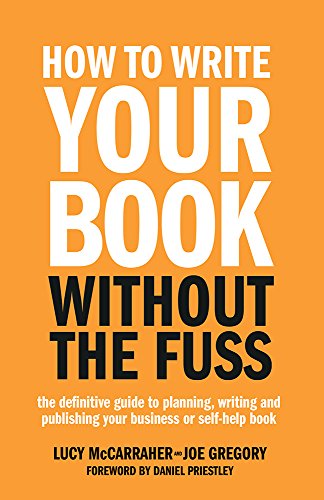


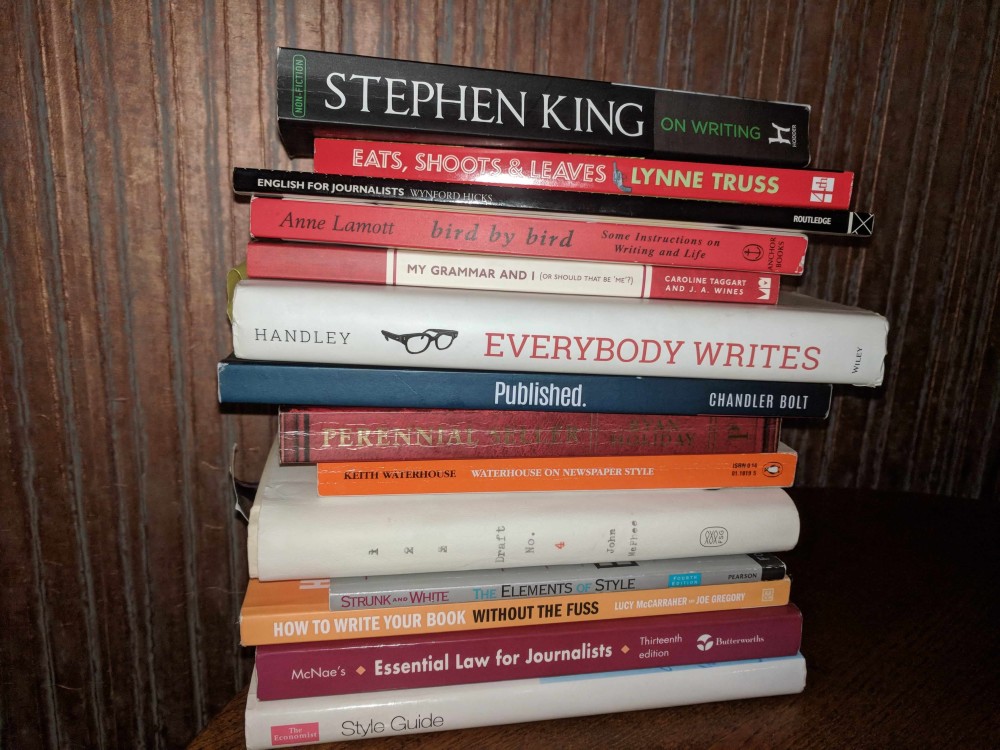
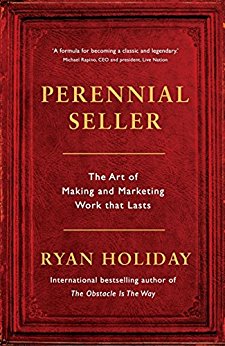
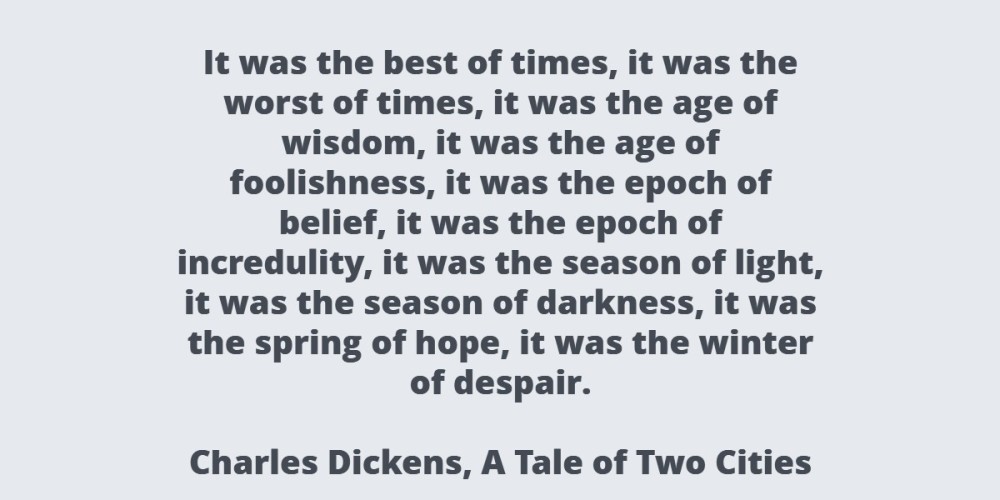
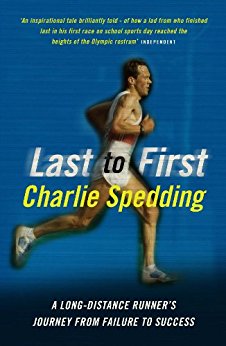


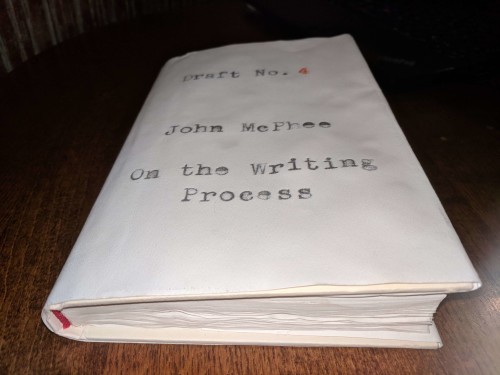

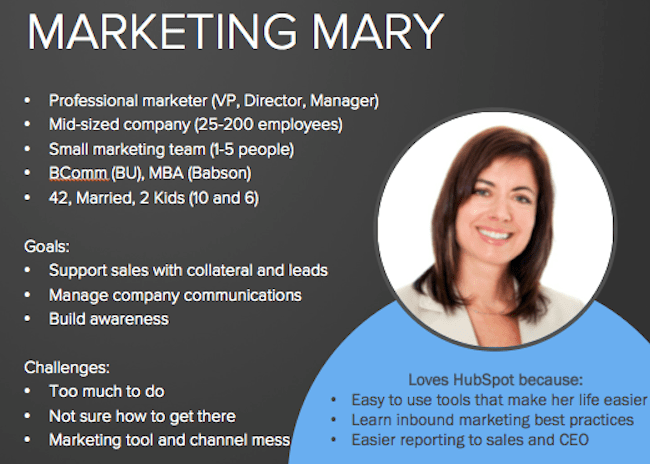

8 Comments